Passing the Threads: Organizing Hand-Me-Downs
Hand-me-downs get a bad rap, but it’s no secret that kids are expensive. According to the USDA, families spend up to $1,280 annually on clothing, especially if you have t(w)eens. (My youngest is 13, so I am feeling this pain.) That’s approximately 6% of the total costs to raise a child. The costs peak during back to school season when the average family spends about $250 per kid.
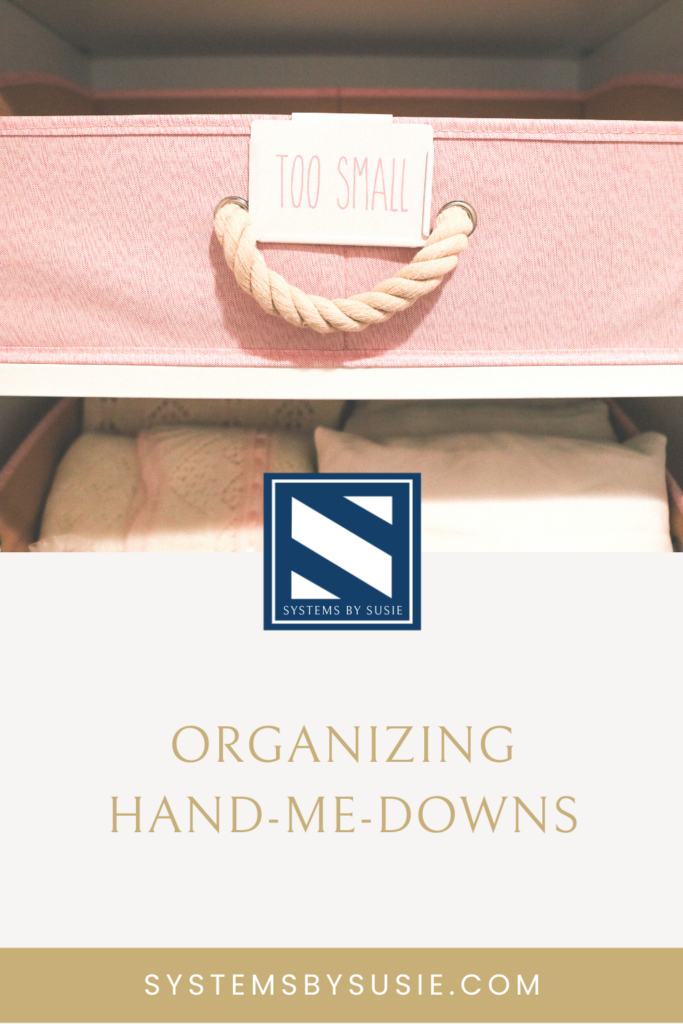
Do those figures blow your mind? It’s no wonder that so many of our clients love hand-me-downs and have systems that we are hired to start or maintain. We also do a lot of work in kids’ closets, because just like in yours, if you don’t know what you have, you’ll overbuy.
Keeping things organized so they can be passed down is a practical way to save a few bucks. And, bonus, it’s also very eco-friendly. Here are a few tips to keep your hand-me-down system functioning – or to start one if you haven’t already!
Start In the Closet
Every time we organize a closet for a child, we include bins for clothes that are too small and too big. These two bins are the key to keeping closets streamlined, and can save you a lot of individual trips to your storage room if you are working on building a hand-me-down system.
The “too big” bin should hold items for the next closet rotation. For example, it’s summer now, so in your too big bin, you might have fall/winter clothes in the next size up ready to go. You can populate this bin from your hand-me-down stash, or first first kiddos, add anything you are given or buy to the bin over the spring/summer season.
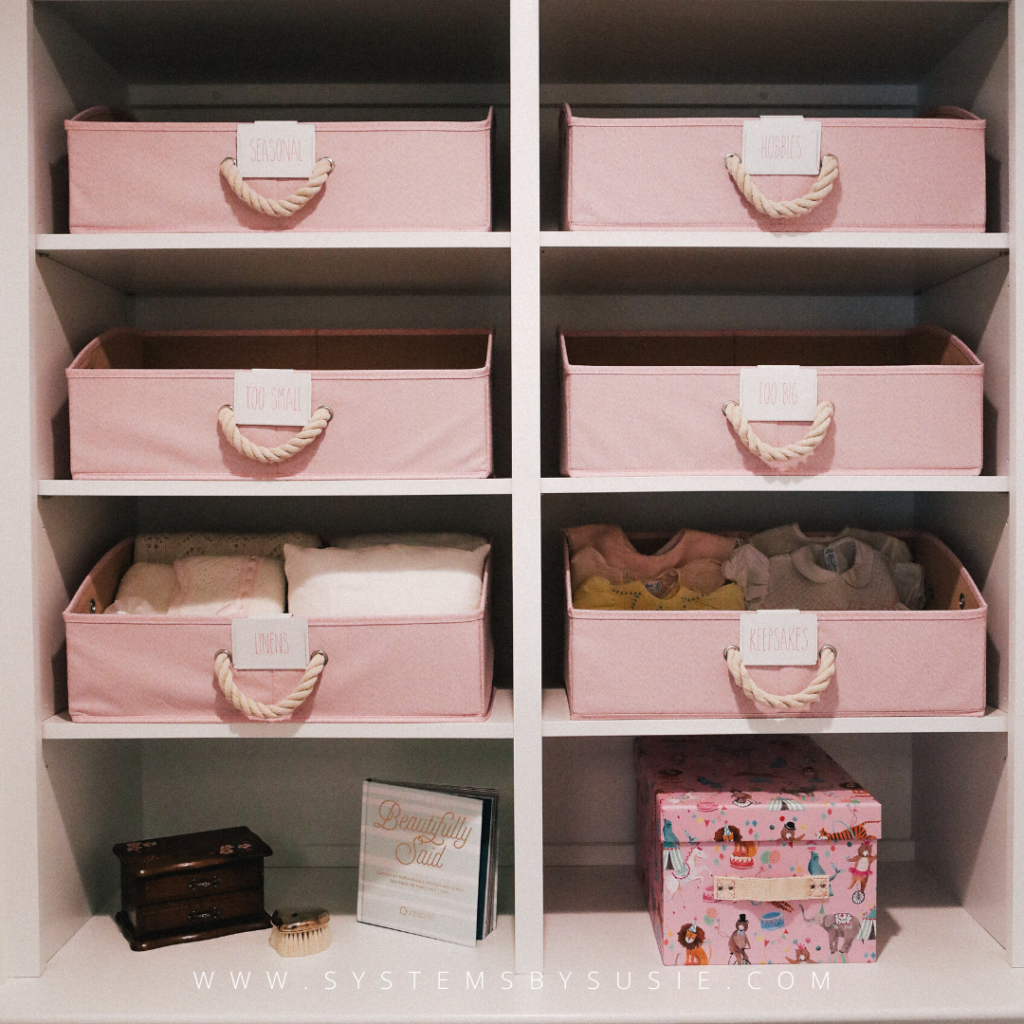
On a daily basis, as you are dressing your kids, or they are getting themselves ready, immediately put anything that no longer fits into the “too small” bin. Then, twice a year (spring and fall), do a closet refresh in which you take the too small bin to your larger hand-me-down system and add it the items to a pre-existing, or a new bin if you are just starting out.
Finally, go through anything that hasn’t been worn and make decisions about whether to keep or donate. Was there a reason it wasn’t worn?
You should also go through the too big bin and pull down into the main closet/dresser items that are now in season and in the correct size.
The Main System
- Choose an area with enough room. Hand me down systems, even for just a couple of kids, can take up a lot of room. Make sure you have space for shelving and bins. To save space, you can choose to sort by size only. If you have a little room to spare, you can micro sort into gender and season.
- Another thing to consider is how you want to store shoes and accessories (socks, undies, hats, gloves, etc.). You can lump them in with clothing by size/season, or keep them in their own bins.
- If you are really tight on space, you can also use vacuum-sealed bags to maximize space in each tote. These can also add an extra layer of protection if you are worried about moisture or other damage. But they do make it more difficult if you need to pull out just one piece for any reason. They also don’t stack well because of their odd shape.
- Sort before you buy bins. Just like with any other organization project, I recommend sorting what you have before you start to buy and place bins. If you decide to sort clothing more specifically versus keeping your categories more generic (e.g. size only), the size of bin you need may change. And, remember, as your kids age, the clothes will get bigger, so you may want to err on the side of larger bins if you are buying a lot at the same time to ensure a consistent look.
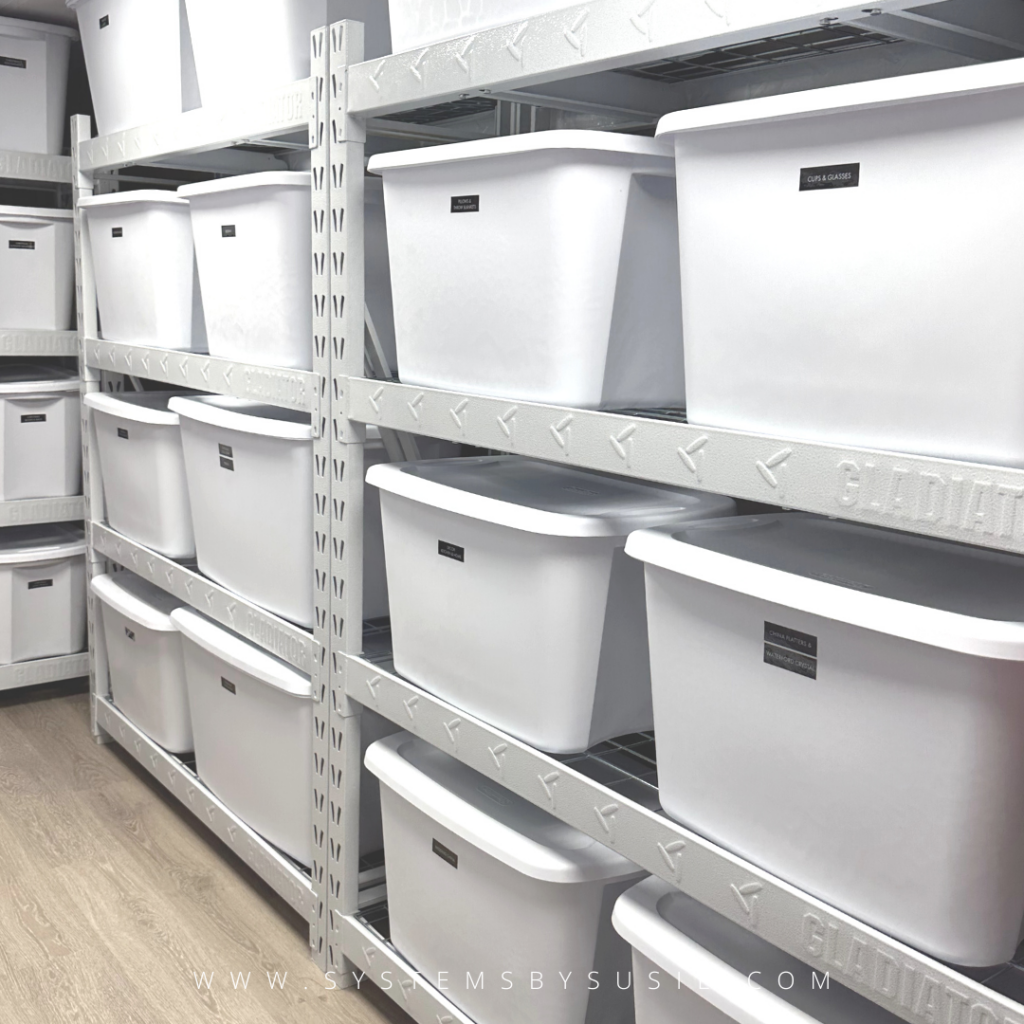
Products
The great debate: Clear vs. Opaque Bins.
I’m generally team clear, so you can see inside and find things quickly. However, if you like the cleaner look of matching, opaque bins, they can work. Just be sure you label very thoroughly and keep those labels up-to-date.
Below are some shelving and bin suggestions that we have used and love. I’ve also included a link to my favorite adhesive pouches. These are a great option for labeling bins where the contents will continuously change (like in a hand-me down system)! Just pop an index card inside and swap it out when you need to. Keep a sharpie and piles of labels next to your bins to make the whole process easier.
Note: Both of the bin options above come in three size options.
More to Consider
- There are going to be items that take on special meaning over the course of childhood. Be sure to have a bin set aside for each kid for these memorable outfits or accessories. (You may also want one for yourself, too!)
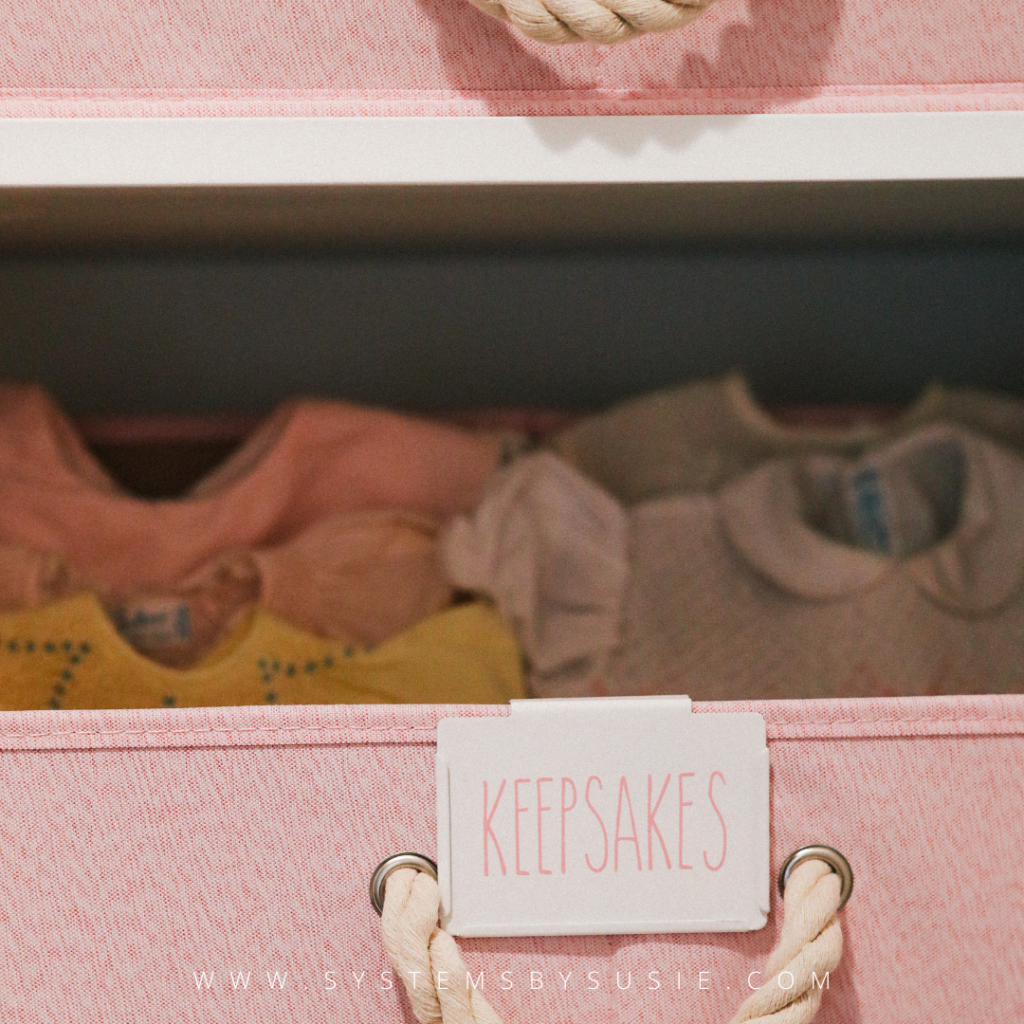
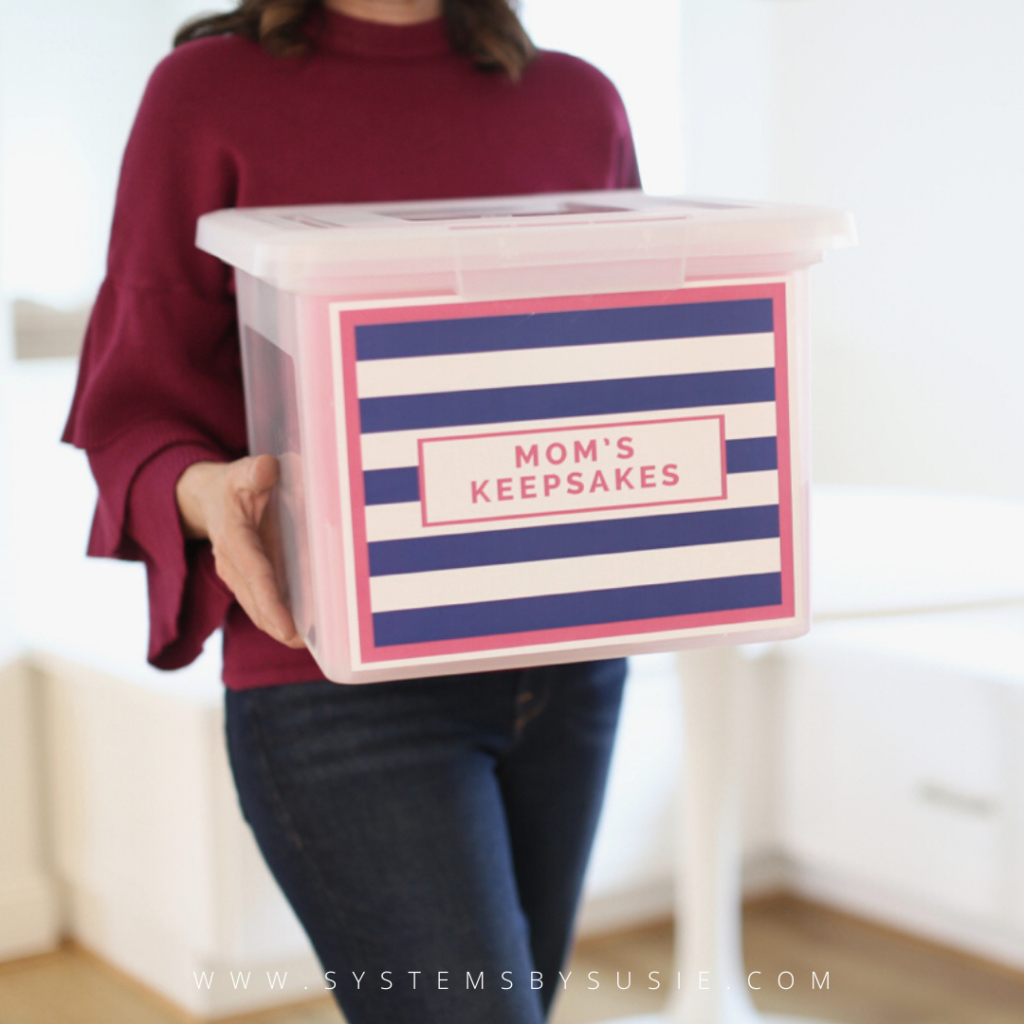
- Brainstorm other items you may need to fold into the hand-me-down system besides clothing. Toys, books, movies are a few examples of other items you can sort by age and store within the system as well.
- Be sure to inspect everything before adding it to your hand-me-down bins. If it’s too worn or stained, it may be time to recycle. Donation bins in closets or next to the storage bins are a good idea.
- Also be sure to wash and dry everything thoroughly. Moisture can lead to mold, which can ruin the entire contents of a bin.
One of the biggest benefits to keeping kids clothing organized as you go is that when it comes time to say the final goodbye through donation, passing items on to a friend or family member, or selling at consignment shops, the hard work will already be done for you! By doing a little maintenance twice a year to keep up the system after its initial setup, you’ll save yourself hours of laundry, sorting and folding later.

If you need help getting started, get on our calendar. We’d love to book a session before school starts up, so you can save a few dollars this fall! For more information on the semi-annual refreshes that are key to maintaining any good closet system, revisit this Seasonal Closet Changeover blog.
Happy Organizing!
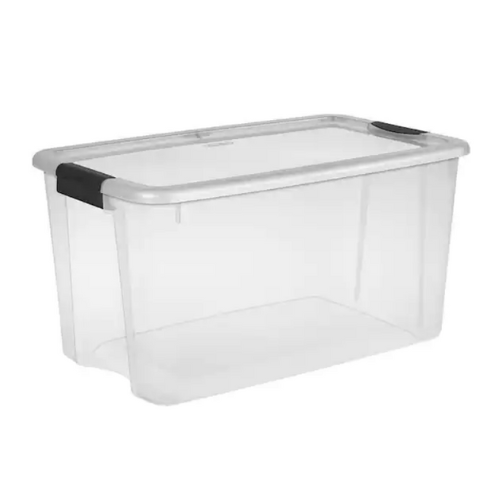




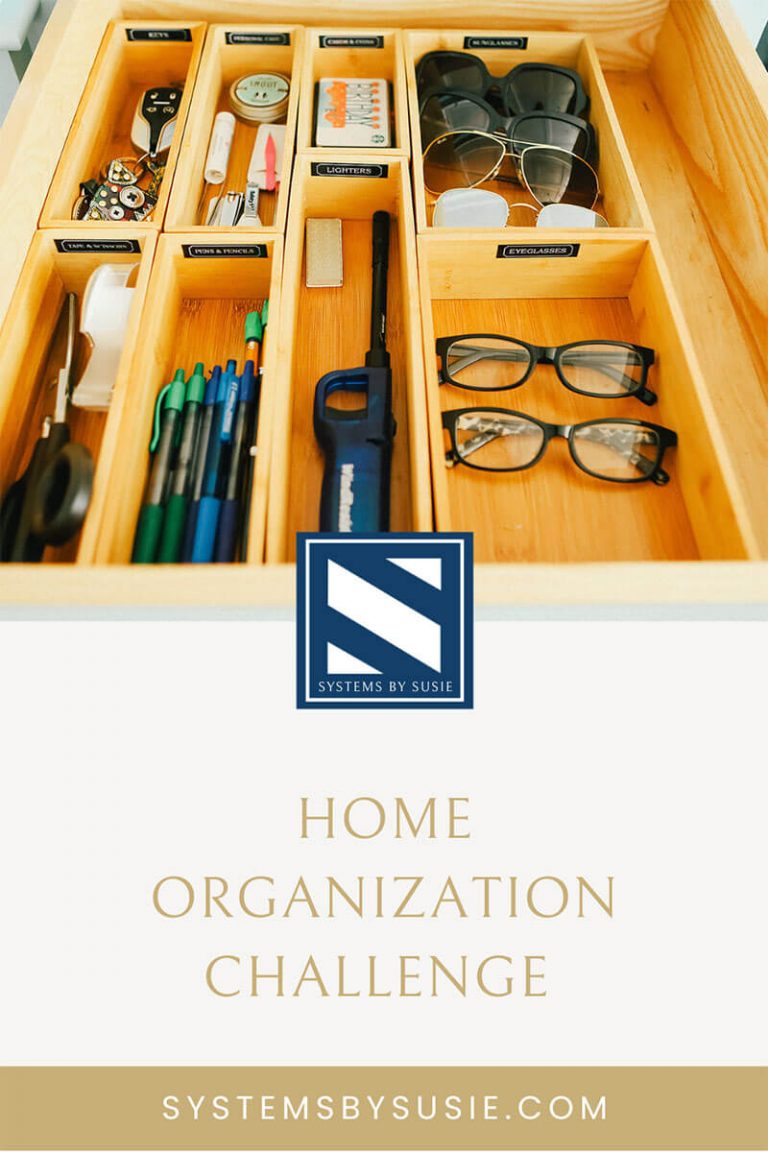
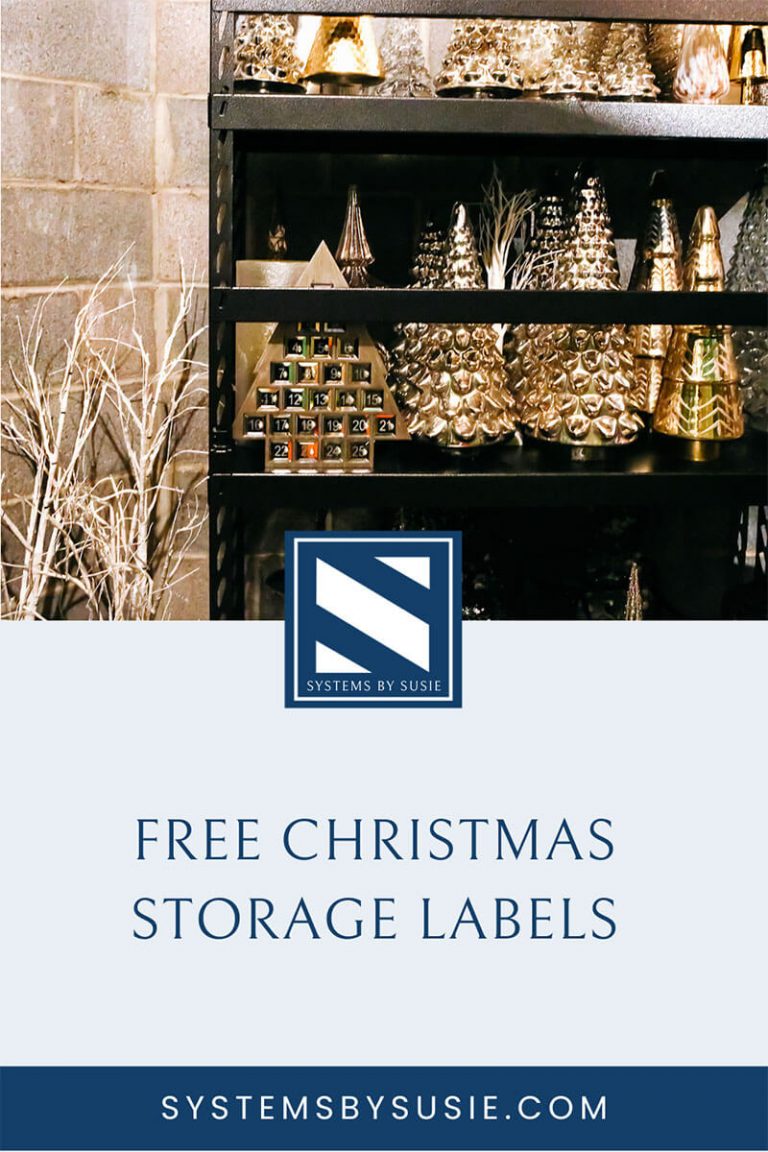
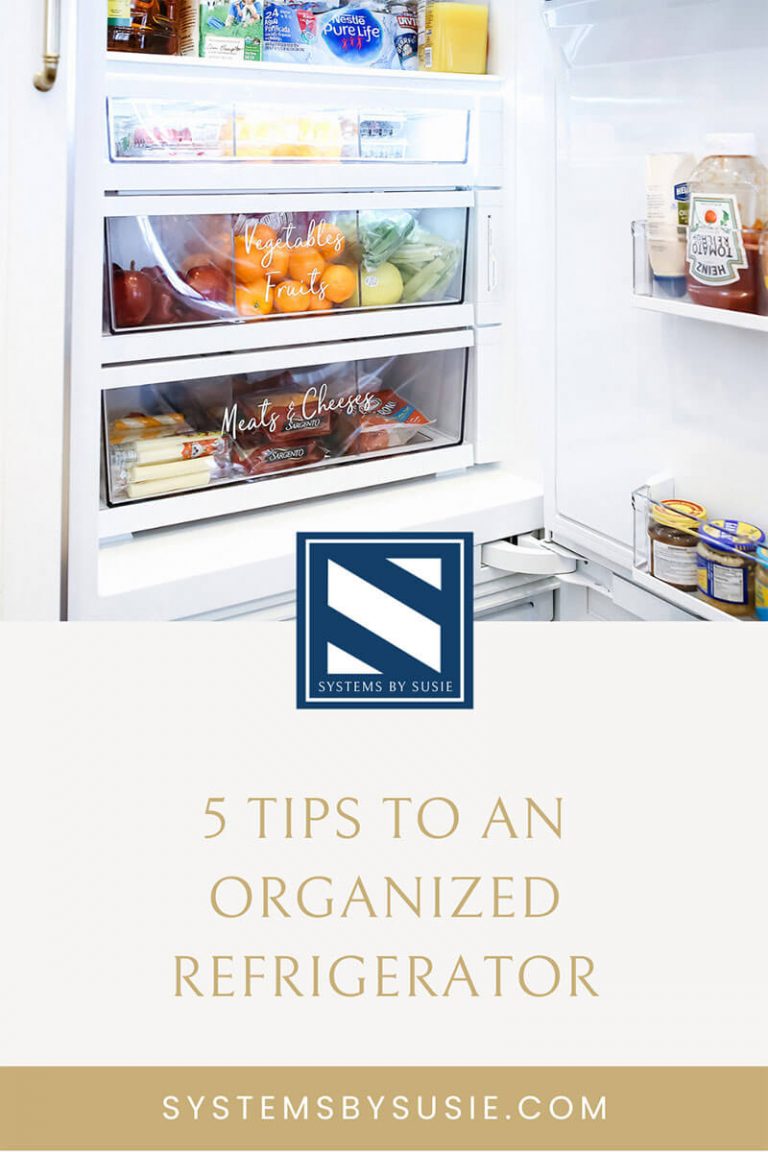
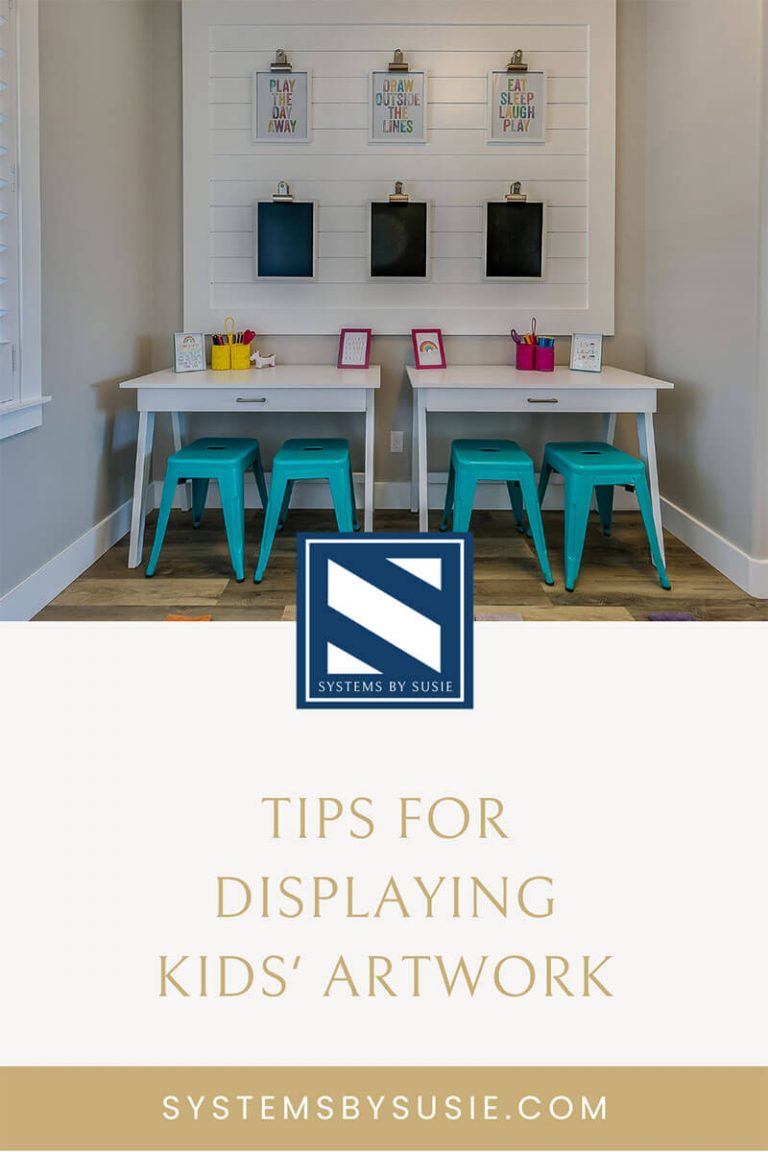
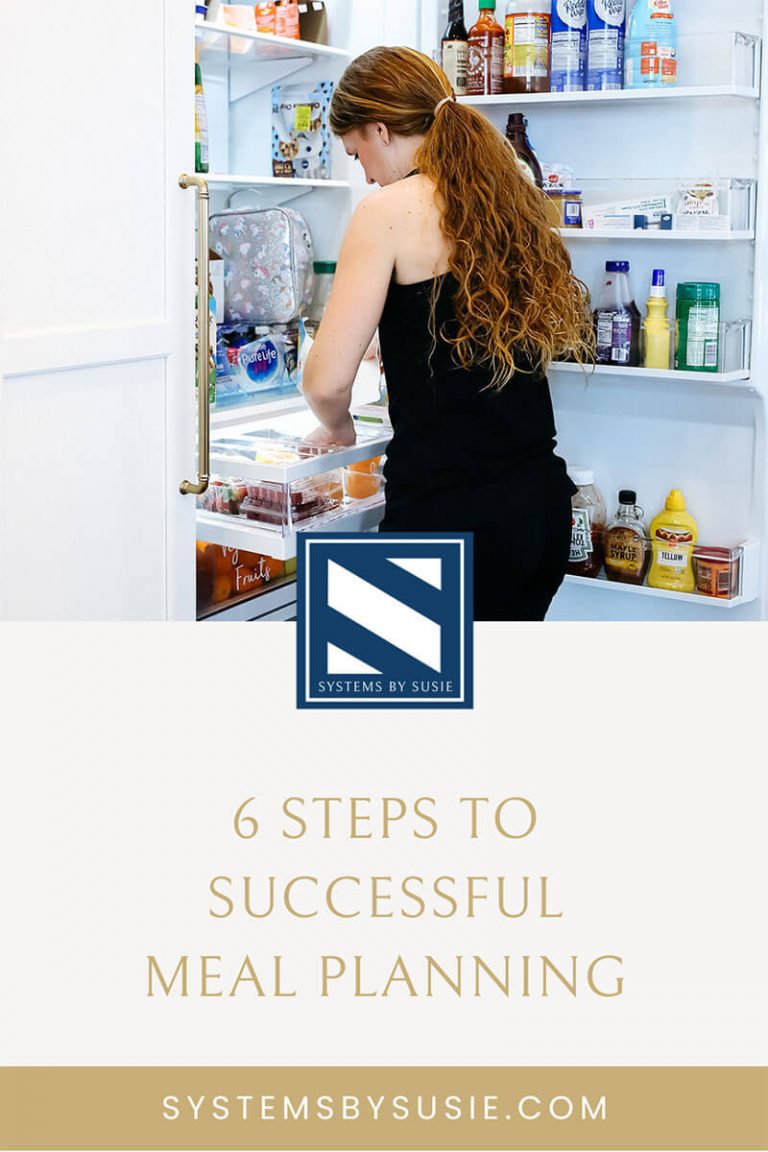
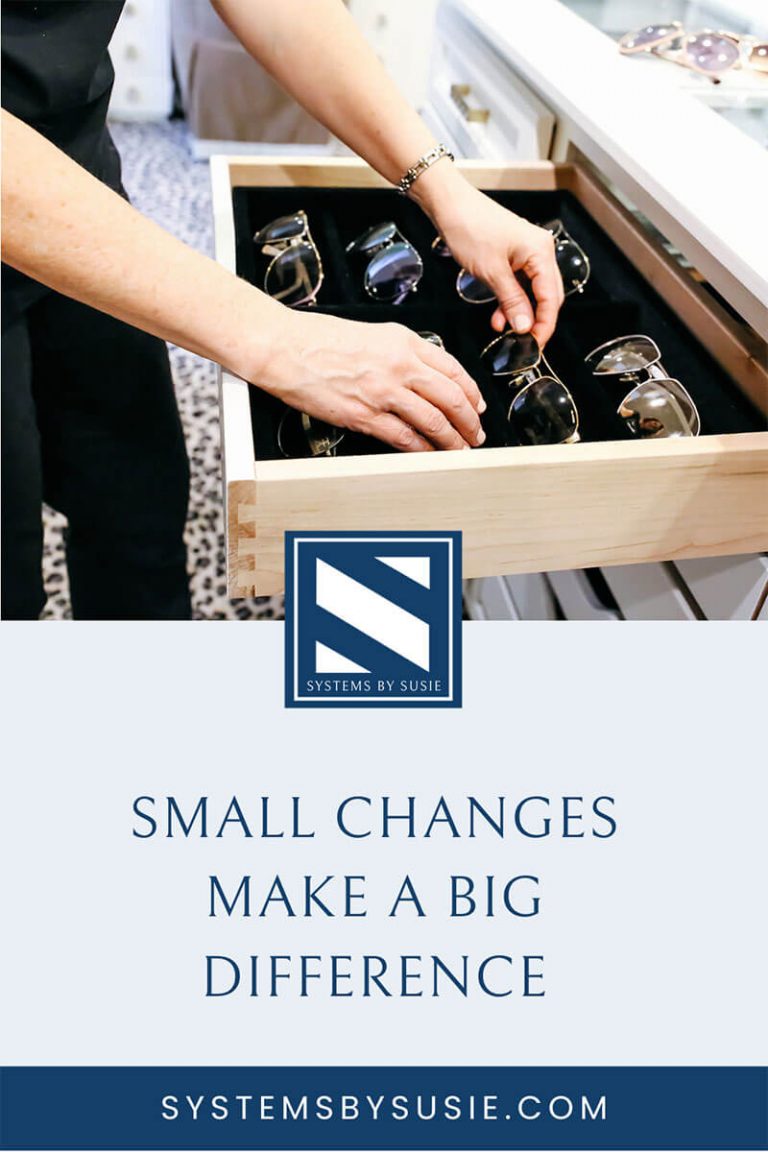
Love it!! Just started this for savannah — even included selling pile and donation pile . It is crazy trying to keep up with kids clothing!
If you have any tips for an entry way.. would love those too!!
This blog is a great place to start if you’re using your entry way as a drop zone: https://systemsbysusie.com/creating-an-after-school-drop-zone-system/